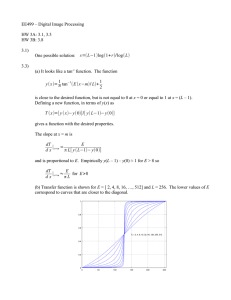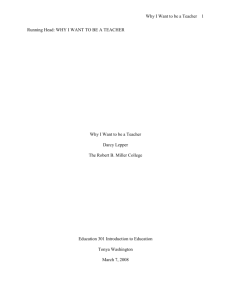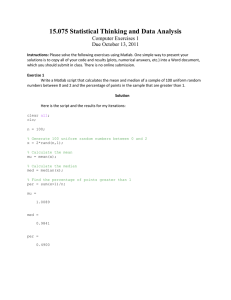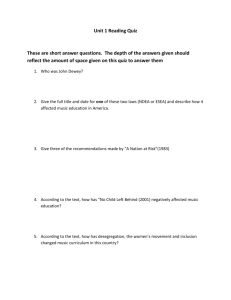normal error function
advertisement
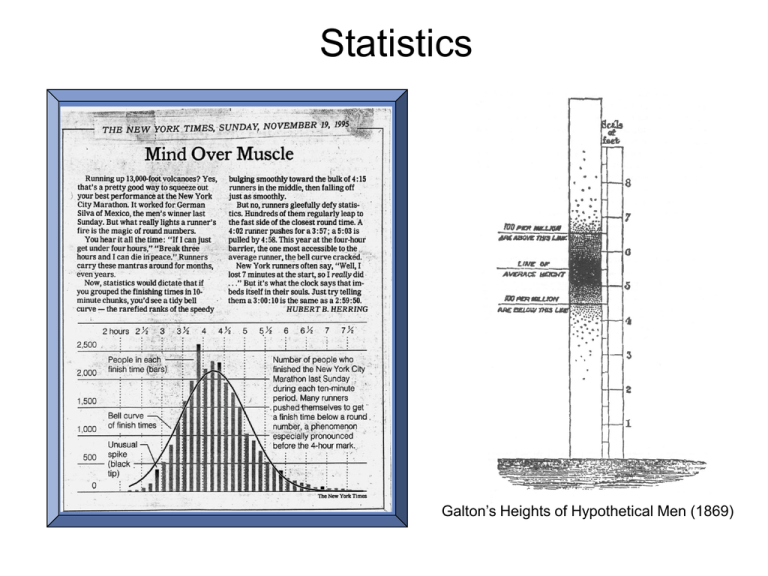
Statistics Galton’s Heights of Hypothetical Men (1869) Statistical Inference x x 2 S2x Some Probability Density Functions Normal: outcome influenced by a very large number of very small, ‘50-50 chance’ effects (Ex: human heights) Lognormal: outcome influenced by a very large number of very small, ‘constrained’ effects (Ex: rain drops) Poisson: outcome influenced by a rarely occurring events in a very large population (Ex: micrometeoroid diameters in LEO) Weibull: outcome influenced by a ‘failure’ event in a very large population (Ex: component life time) Binomial: outcome influenced by a finite number of ’50-50 chance’ effects (Ex: coin toss) Probability Density & Distribution The probability distribution function (PDF) is the integral of the probability density function (pdf). pdf PDF Pr[x≤1] = Fig. 7.14 The Normal Distribution Figure 8.4 Concept of the Normal Distribution Figure 8.5 Population, with true mean and true variance x‘ and σ Normalized Variables 1 2 p( x ) exp 2 ( x x ' ) 2 2 1 Pr z1 z1 1 2 z1 z1 2 exp d 2p(z1 ) 2 where p(z1) is the normal error function. Normal Error Function Table Pr[0≤z≤1] = Pr[-1≤z≤1] = Pr[-2≤z≤2] = Pr[-3≤z≤3] = Pr[-0.44≤z≤4.06] = Table 8.2 In-Class Problem • What is the probability that a student will score between 75 and 90 on an exam, assuming that the scores are distributed normally with a mean of 60 and a standard deviation of 15 ? Statistics Using MATLAB® • MATLAB®’s statistics toolbox contains distributions such as the normal (norm), Student’s t (t), and c2 (chi2). • Some useful command prefixes are the probability density function (pdf), probability distribution function (cdf), and the inverse of the distributions (inv). • The command normpdf(x,x',σ) gives the value of p(x). normpdf(0,0,1) = 0.3989 • The command normcdf(x*,x',σ) gives P( x*) x* p( x )dx normcdf(1,0,1) = 0.8413 (= 0.3413 + 0.5000) normal error function, p(z1) = normcdf(z1,0,1) – 0.5 •The command norminv(P,x',σ) gives x* from the cdf norminv(0.8413,0,1) = 1 Statistics Using MATLAB® (cont’d) • To obtain the value of z for a given %P, x' and σ: 1 P 1 P norminv ( , x , ) norminv ( , x , ) 2 2 z 2 • z(95,0,1) = 1.96 and z(95.45,0,1) = 2.00 Degrees of Freedom • The number of degrees of freedom, n, equal the number of data points, N, minus the number of independent restrictions (constraints), c, used for the required calculations. • When computing the sample mean, • When computing the sample standard deviation, • When constructing a histogram, • When performing a regression analysis, where m is the order of the fit (linear, m = 1).
